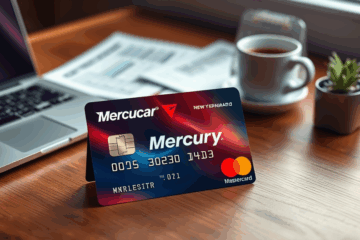Using Personal Loans for Bill and Debt Relief
Personal Loan options can provide individuals with a strategic way to take control of their financial landscape.
In this article, we will explore how consolidating debts can help simplify your finances and reduce monthly payments.
By examining the benefits of lower fixed interest rates and the importance of assessing your financial situation, we aim to guide you in making informed decisions.
Understanding your credit score and overall debt levels is crucial in determining if a personal loan is the right solution for you.
Join us as we delve into these essential insights.
Grasping the Role of a Debt‑Focused Personal Loan
A personal loan dedicated to paying off bills and debts is a fixed-sum financial product designed specifically to consolidate multiple liabilities into one manageable monthly payment, typically with a lower interest rate than high-interest credit cards.
Borrowers often turn to this type of financing as a tool for debt relief and financial management, aiming to simplify their finances while reducing the total interest paid over time.
This loan type helps individuals regain stability by eliminating the chaos of multiple due dates and varying interest rates, creating a structured path toward repayment.
What makes it particularly attractive is the predictability it offers—borrowers know exactly when their loan will be paid off and at what total cost.
As solutions like Bankrate’s personal loan options show, these products serve as a smart route toward taking control of your financial health.
Delaying action on debt can have serious long-term consequences, pushing many to seek relief through structured solutions like personal loans.
Turning Multiple Payments into One Manageable Obligation
Managing multiple monthly payments can feel overwhelming, especially when juggling various bills and debts.
A personal loan can simplify this process by allowing you to consolidate these obligations into a single, manageable payment.
For instance, if you have credit card bills, a car loan, and medical expenses, merging them into one loan with a fixed interest rate can not only streamline your monthly finances but also potentially save you money on interest.
Common Obligations Suitable for Consolidation
Many borrowers use personal loans to combine high-interest credit card balances, outstanding medical bills, and even overdue utility payments into a single, structured loan.
Rather than juggling several minimum payments with varying due dates and fluctuating interest rates, these obligations get rolled into one predictable monthly installment.
Platforms like LendingClub help streamline this process, allowing borrowers to regain control and steadily eliminate their debt under a fixed interest rate.
This strategy not only reduces stress but can also save substantial money over time as it often replaces variable, high-interest debts with a simpler, lower-cost solution.
Maintaining Discipline After Consolidation
Consolidating debts into a personal loan can feel like a fresh start—but it’s only effective if you avoid falling into new debt traps.
One of the most critical steps after consolidation is to stay vigilant with your spending.
Temptations may arise to use newly available credit, but resisting that urge is key to your long-term financial health.
Do not close your eyes to spending habits; ignoring small daily expenses can lead to a ripple effect of financial setbacks.
Instead, redirect that discipline toward building emergency savings and long-term goals.
Perform a monthly budget check-in to stay aligned and commit to consistency.
Fixed‑Rate Predictability vs. Revolving‑Credit Surprises
Fixed interest rates on personal loans provide predictable monthly payments, unlike the fluctuating rates found on credit cards or the extreme costs hiding behind payday lending.
This cost consistency helps borrowers plan their budgets with confidence and clarity, especially when repaying consolidated debt.
Credit cards often carry variable APRs that rise with market rates, while payday loans trap users with astronomical fees.
Personal loans, in contrast, offer structured, lower-risk repayment over a fixed period, which can significantly reduce overall costs.
According to Bankrate’s personal loan rate data, the average interest on a personal loan is generally much lower than other forms of short-term borrowing.
Pre‑Application Self‑Assessment Checklist
Before applying for a personal loan to manage bills or pay off debts, it’s crucial to evaluate three main areas of your financial standing.
First, check your credit score, as lenders use it to assess risk and determine loan terms.
A higher score often unlocks better interest rates, making repayment more manageable.
Next, ensure your income stability can support the monthly installment without endangering your essentials—steady employment or a consistent revenue stream can significantly affect approval odds.
Additionally, calculate your debt-to-income (DTI) ratio, which reflects how much of your monthly income goes toward existing debt.
Most lenders prefer a DTI under 40%, according to NerdWallet’s guidance on loan requirements.
Take an honest look at your financial habits and obligations before moving forward, as overestimating your capacity could lead to deeper debt.
By proactively assessing these factors, you can approach the loan process more strategically
From Pre‑Qualification to Funding: Navigating the Loan Process
The process begins with pre‑qualification, a crucial step that allows borrowers to preview potential loan terms without affecting their credit.
This soft credit check helps determine eligibility and estimated rates, guiding users toward realistic options for bills or debt consolidation.
Once eligible offers appear, borrowers should compare at least three reputable lenders to avoid overpaying on interest or loan fees.
This comparison ensures they select the most favorable rate and repayment term suited to their financial goals.
Choosing a loan isn’t just about low rates—it also includes evaluating lender transparency, customer service, and funding speed.
Next, aim to meet specific documentation requirements, which usually include proof of income, employment verification, and identification.
Having this paperwork prepared streamlines the official application.
After submitting the application, a final credit check triggers the lending institution’s evaluation process.
During loan approval, underwriters confirm all details before issuing a loan offer.
Once approved, some lenders release funds as fast as the next business day, allowing borrowers to take swift control of their debt or outstanding bills.
For more details on each step, the Experian Personal Loan Guide offers a clear and trusted breakdown.
Personal Loan solutions can be a game-changer in managing debt effectively.
By assessing your situation and weighing the benefits, you can make informed choices that pave the way for greater financial stability.



0 Comments